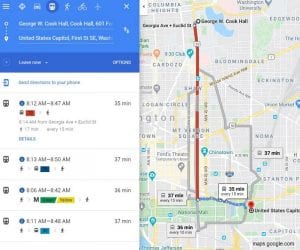As classrooms transition back to in-person learning, Population Education wanted to share some activities for socially distant classes. We’ve collected some of our favorites lessons from Population Education that limit materials sharing and allow students to be appropriately spaced. We’ve also reached out to educator friends to hear about lessons they’ve designed and used. You’ll see ideas linked below and divided by grade band.
Socially Distant Classroom Activities for Lower Elementary Students
1. Word webs and concept maps can be a powerful tool for brainstorming links and connections between complex topics. In More or Less, students start with the idea of a growing human population and imagine all of the things that more people can impact. In this lesson, start by placing the words “More People” in the center of a whiteboard. Pass a word card out to each student, along with one “more” card and one “less” card. Allow students to walk up one at a time to add their word to the web. They’ll need to add their word and either “more” or “less,” depending on how they feel having more people impacts their word.
2. If you’re looking for an interdisciplinary art project for younger learners that can be done in their seats, try PopEd’s Lend a Hand to the Earth. In this lesson, students think of a personal action they can take to make the planet a better place, and draw or write their action on a hand print. The finished art projects can be later assembled into a collage to inspire positive environmental actions for everyone in class.
Socially Distant Classroom Activities for Upper Elementary Students
3. We could not resist including a timely socially-distant tag game inspired by the covid-19 pandemic from an educator in Tennessee: Pandemic Pandemonium. The game includes a coronavirus tagger trying to infect all students (with a contactless pool noodle) and a Dr. Fouci character that races to generate herd immunity. There’s quarantine, COVID tests, and positive and negative results. The game is a fun way to learn about a serious topic.
4. Integrate math skills with the science of photosynthesis and a social studies exploration of urbanization in Green Spaces. In part one, students head outside to individually measure plots of grass that have the potential to generate enough oxygen to support the class for a day. They use math skills to calculate the appropriate areas, and conduct a science observation of the plants in their plots. In part two, students return to their desks with a worksheet representing an empty city. They design their own metropolis to meet the needs of their populace, and must include oxygen-producing green space on their map.
Socially Distant Classroom Activities for Middle School
5. In Population Circle, students model the exponential growth of humans over time. Each student represents 500 million people, and adds to the global population between 1525 and 2025. The class counts in unison to move through time, and each student has a counting card that tells them their appropriate year. Rather than stepping into a crowded circle representing the Earth (as the lesson plan is written), have students stand at their desk as their number is called. They will still be able to visualize the rate of growth without experiencing the risks of physical crowding.
6. We’ve had to table our popular Mining for Chocolate activity while we all worked in virtual learning environments. Now that we’re moving back into classrooms, this cookie mining activity makes a perfect socially distant lesson on the human impacts on the environment during the process of resource extraction. Students receive their own worksheet, cookie, and toothpick. At their desks, students use the toothpick to mine the valuable chocolate chips from their cookie land. If students wear masks in your classroom, they’ll have even more incentive to refrain from eating their materials before the lesson completes.
7. Active simulations take a little more thought and preparation to be socially distant and safe. This powerful simulation from a teacher in Maine, Savage Ravage in a Pandemic, models the mechanics of dynamic equilibrium in a simplified food chain. Students play the role of herbivores and carnivores in an ecosystem with popsicle stick plants. Students struggle to gather the food they need to survive over several rounds, and graph the fluctuating species’ population over time.
Socially Distant Classroom Activities for High School Students
8. Encourage students to define their personal values, communicate their beliefs, and listen to differing points of view with the PopEd lesson Take a Stand. In the original lesson plan, teachers read a statement and students arrange themselves physically along a line of “strongly agree” to “strongly disagree” according to their beliefs. In this socially distant adaptation, students remain seated at their desks. The teacher reads a statement, and students hold up fingers on their hands according to how they believe. Five fingers represent “strongly agree,” three fingers represent “neutral,” and a closed fist (zero fingers) represent “strongly disagree.”
9. Take students outside to model connections between economics, social conditions, and health in nations around the world with Unfair Race. Students will need a large field or parking lot to spread out along a line. As you read various indicators that impact health outcomes, students take big steps forwards or backwards according to the statistics from their country. Once all factors are read, students race to the finish line across the field or parking lot.
What Are Your Favorite Socially Distant Teaching Activities?
Share your own ideas for safe socially distant classroom activities, or modifications of PopEd activities, on one of our social media platforms: Facebook, Twitter, Instagram, Pinterest.




